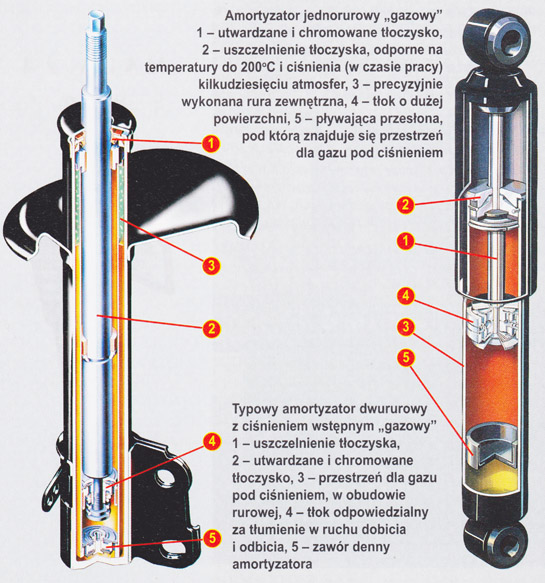 The operating characteristics of the suspension shock absorbers greatly affect the handling of the car and the driving comfort. Unfortunately, these two parameters, road behavior and comfort, are in serious contradiction. Strong damping, favorable for driving, it is perceived as unpleasant by many passengers.
The operating characteristics of the suspension shock absorbers greatly affect the handling of the car and the driving comfort. Unfortunately, these two parameters, road behavior and comfort, are in serious contradiction. Strong damping, favorable for driving, it is perceived as unpleasant by many passengers.
Thus, a shock absorber should actively vary its vibration damping abilities.
It was invented a long time ago, but initially the oil flow through the damper valves could only be adjusted from the outside, that is, at a standstill. Then several position solenoid valves appeared, adjustable while driving. The development of electronics made it possible to automatically adjust the damping to the driving style and the road condition. It was a natural step to connect – already stepless – shock absorber damping adjustment, with a stabilization system (ESP) collecting information about the car's behavior and about it, what commands the driver gives the car. When the ESP finds a mismatch, intervenes e.g.. applying the brakes to the appropriate wheels. But with sufficiently responsive shock absorbers, may apply a preventive action first, np. stop the car from tipping or diving while braking, and thus make it easier for the driver to perform a difficult maneuver. This solution was used by Opel in the Astra III. Sachs shock absorbers were used, in which the oil valves are controlled by an electric stepper motor. A system called CDC (all the time, variable damping), is part of the IDS Plus system, including active control of most of the chassis functions. But it is possible to do the same, without the use of quite troublesome solenoid valves.
Delphi has introduced shock absorbers that use a variable viscosity hydraulic fluid. It is a suspension that reacts to a magnetic field – the stronger it is, the more ordered is the arrangement of iron particles within it, forming porous, partially compact structure. As a result, simple and efficient monotube shock absorbers were created (gas, i.e. with pre-pressure), without external valves, but with variable damping, regulated intensity of the magnetic field generated in the piston.
The ESP system and wheel suspension motion sensors work together with Magne-Ride shock absorbers. The system responds to chassis movements, w 15 ms by adjusting the damping of each shock absorber to the momentary needs. This makes it soft, The car, while comfortably negotiating unevenness, does not tilt and rock excessively. Additionally, it is possible to combine the MagneRide system with pneumatic leveling of the body. Reviews of American customers driving Corvettes and Seville equipped like this are enthusiastic.
Electronics in shock absorbers
Visited 507 times, 1 visit(s) today